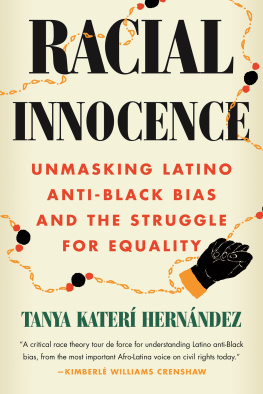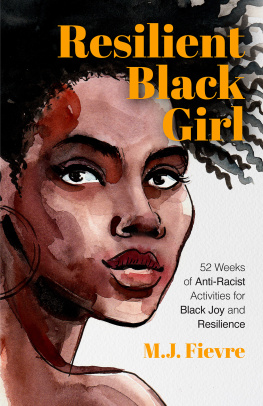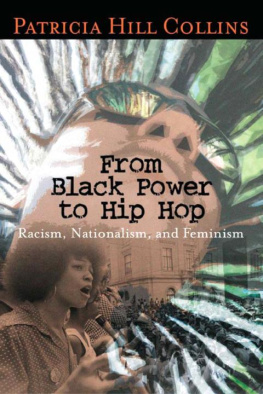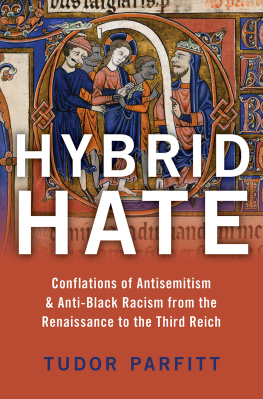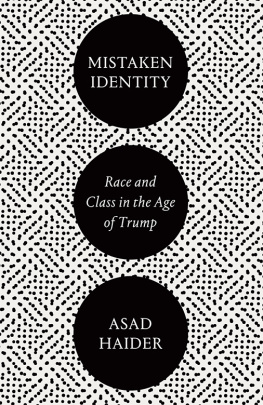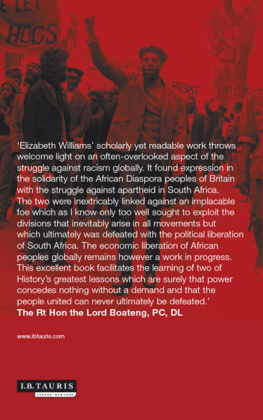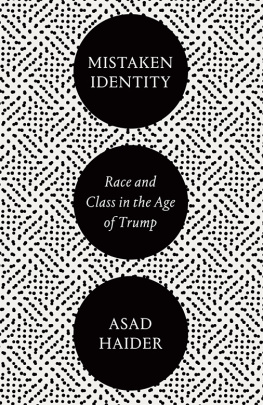CLASS STRUGGLE
AND
THE COLOR LINE
CLASS STRUGGLE
AND
THE COLOR LINE
AMERICAN SOCIALISM
AND THE
RACE QUESTION
19001930
PAUL M. HEIDEMAN

2018 Paul Heideman
Published in 2018 by
Haymarket Books
P.O. Box 180165
Chicago, IL 60618
773-583-7884
www.haymarketbooks.org
ISBN: 978-1-60846-193-6
Trade distribution:
In the US, Consortium Book Sales and Distribution, www.cbsd.com
In Canada, Publishers Group Canada, www.pgcbooks.ca
In the UK, Turnaround Publisher Services, www.turnaround-uk.com
All other countries, Ingram Publisher Services International,
This book was published with the generous support of Lannan Foundation and Wallace Action Fund.
Cover and text design by Eric Kerl.
Library of Congress Cataloging-in-Publication data is available.

Acknowledgments
Many people had a role in shaping this book, knowingly or not. At the University of Wisconsin, Craig Werner first showed me the importance of Black history. At RutgersNewark, Barbara Foley supervised my dissertation on Black intellectual history and the Russian Revolution, which is where I first encountered much of the material included here.
Matthew Nichter did what he does better than anyone else, pointing me to corners of the archives I had overlooked and asking simple but probing questions. Douglas Williams and Grant Hoppel provided timely research assistance, and Matthew Tucker saved the day with a late-stage tech fix.
The team at Haymarket Books provided support at every step along the way. This book first grew out of conversations with Ahmed Shawki over a half decade ago. Nisha Bolsey shepherded the manuscript along the way, enduring far more missed deadlines than are decent. Tanya Grove from BookMatters undertook the Herculean task of copyediting a book of century-old documents, and the book is considerably more readable for her efforts.
This book is dedicated to my fiance, Vickie Sliva, who kept believing I would finish this project even as deadlines flew by, who helped get it done with some late-night transcribing, and whose love and support made every step possible.
Introduction
In the history of American radicalism, the struggle against racism looms large. W.E.B. Du Bois, writing in 1913, famously called the race question the great test of the American socialist. Later generations of socialists tended to agree with him, elevating the antiracist struggle to a place of centrality in left strategy. From the 1930s to the present day, American leftists have seen the struggle against racial oppression, most centrally of black Americans, as one of the key questions radicals face in the movement to remake American society.
At the same time, it is something of a consensus judgment on the left that before the 1930s, when the Communist Party (CP) threw itself into organizing the struggle against Black oppression, American radicals largely failed Du Boiss test. The record of the pre-Depression left is often summed up with Socialist Party (SP) leader Eugene Debss statement: We [the Socialist Party] have nothing special to offer the Negro.
The truth is considerably more interesting than this caricatured image. Take Debs, for example. In the same essay from which his infamous statement is drawn, he also declares, The whole world is under obligation to the Negro, and that the white heel is still upon the black neck is simply proof that the world is not yet civilized. Later he declares, Socialists should with pride proclaim their sympathy with and fealty to the black race, and if any there be who hesitate to avow themselves in the face of ignorant and unreasoning prejudice, they lack the true spirit of the slavery-destroying revolutionary movement. When an SP member wrote back to Debs, warning him, you will jeopardize the best interests of the Socialist Party if you insist on political equality of the Negro, Debs replied with scorn that the party would be false to its historic mission, violate the fundamental principles of Socialism, deny its philosophy and repudiate its
In one sense, Debs was an outlier in early twentieth-century radicalism. Few other white socialists matched his deeply felt commitment to the emancipation of all oppressed groups, and fewer still took the kind of steps he did to bring it about, from fighting his union on the question of racial integration to refusing to speak in front of segregated audiences.
At the same time, Debss attention to what was then called the Negro question was hardly exceptional in this period of American radicalism. From the turn of the century to the advent of the Depression, there was a wide-ranging and extensive debate among American radicals on what the fact of Black oppression meant for socialists. The answers to this question varied tremendously, from Black socialists who argued for emigration to build socialism in Africa to some white socialists who wholeheartedly embraced white supremacy. Whatever might be said about this debate, the one thing early American socialism cannot be accused of is ignoring the race question.
This collection seeks to restore this debate to its proper place in the history of American radicalism. All too often, early socialists discussion of the color line is treated as little more than a prelude to the more important advances made in the 1930s. The earlier decades are brought up mainly as an example of the time when socialists got it wrong. Rather than a prelude, this collection suggests that the pre-Depression left is better seen as a foundation on which later radicals built.
To this end, this collection reconstructs the scope of the debate on the race question that took place on the American left during the first three decades of the twentieth century. Many of the texts collected here have never before been republished, with some remaining out of print for more than a century. Their relative unavailability has been one factor enabling the lazy generalizations one so often encounters about the American left during these years. Other texts have been luckier, finding their way back into print multiple times in the intervening decades. But even these, like the Du Bois essay from which the above quote is taken, have been distorted as the intellectual context in which they appeared has been lost. It is my hope that republishing this material will allow for a new appreciation of the seriousness with which early American socialists confronted the problem of Black oppression.
In particular, there are two streams of thought I hope to draw attention to. The first is that developed by the Black socialists, most extensively at publications like the Messenger and the Crusader. While the writers behind these publications, like A. Philip Randolph, Chandler Owen, and Cyril V. Briggs, have long been recognized as pioneering Black Marxists, the full creativity of their contributions has rarely been appreciated. Typically, the Messenger writers are treated as class first socialists, in accord with their allegiance to the SP, while the Crusaders ideology is summarized as Black nationalism drawn to communism through the Communist Internationals support for anticolonial movements. Both these glosses contain more falsehood than truth, as the material collected here demonstrates. Rather than simplistic exemplars of easily categorized ideologies, these journals contained arguments leading in any number of often contradictory directions. Early black Marxism was, quite simply, more interesting and creative than has been appreciated.
Next page



